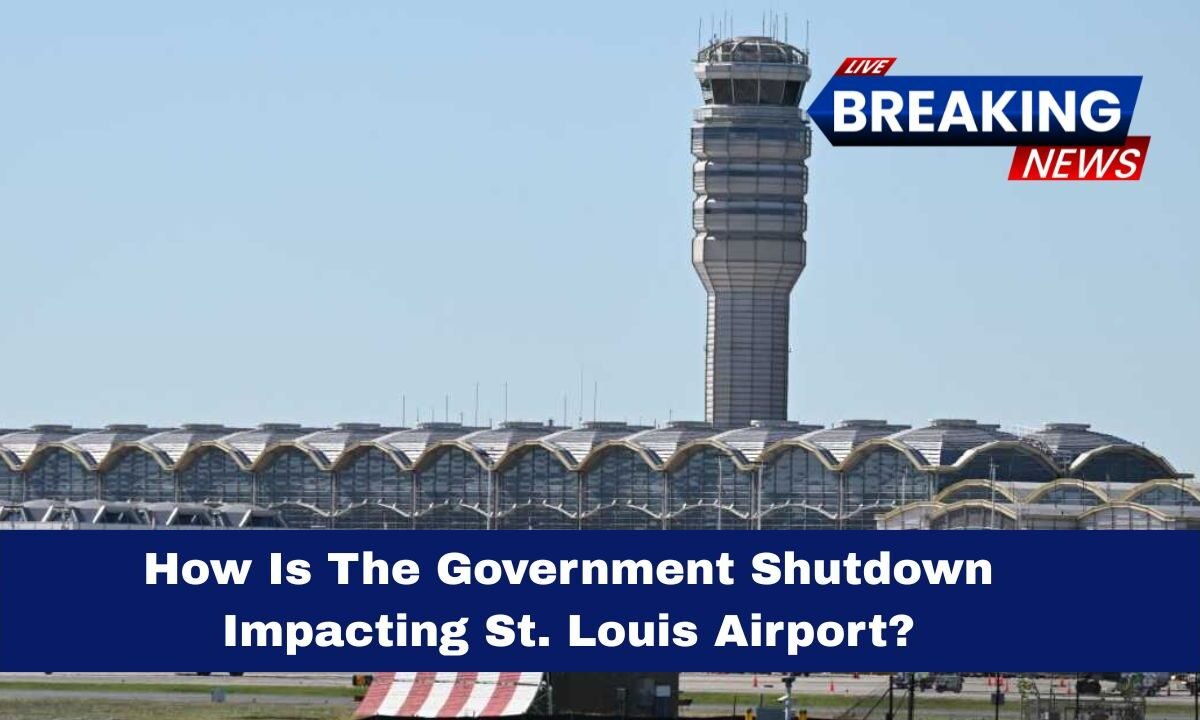The U.S. federal government shutdown, which began on October 1, 2025, is already creating ripple effects across the aviation system.
While St. Louis Lambert International Airport (STL) may not yet bear the brunt directly, flights, security operations, and scheduling are all under strain from national disruptions.
In this article, you’ll find the latest facts, figures, and practical guidance to navigate travel via STL during this uncertain period.
Why STL Feels the Impact Even If Locally It Looks Normal
- National air-traffic control (ATC) pressure: Delays or flow restrictions in major hubs or control centers elsewhere in the U.S. cascade into regional airports like STL.
- TSA and FAA working without pay: TSA officers and air-traffic controllers are classified as “excepted” employees—they must report to duty but aren’t currently being paid. That strains morale, increases sick calls, and reduces flexibility.
- Volatility across the network: Even if STL’s internal operations remain stable, delays outside STL (inbound or outbound) can push gate times, connection windows, or cause re-routing.
Latest Figures and Trends (As of Early October 2025)
- Over 10,000 flight delays have been recorded nationwide in a few days, with hundreds of cancellations already logged.
- A striking share of delays are now being attributed directly to staffing shortages, a notable shift compared to typical causes like weather or mechanical issues.
- TSA and FAA employees continue to work unpaid, with many already signaling stress, fatigue, or inability to absorb extended strain.
What’s Happening at STL
| Area / Function | Effect at STL | Underlying Cause | Traveler Reality |
|---|---|---|---|
| Security / TSA | TSA agents still on duty; lines may swell | Working without pay, increased sick calls | Wait times may vary significantly; earlier arrival recommended |
| Air Traffic Control / Flow | Downstream delays affect STL arrivals/departures | Nationwide controller strain, traffic metering | Flights may depart late or arrive late even if STL tower is unaffected |
| Flight Schedules | More frequent late departures, occasional cancellations | Staffing disruptions contributing to instability | Monitor airline apps closely; rebooking may become necessary |
| Connections & International | Slower processing at major hubs can delay onwards travel to STL | CBP and other customs/immigration staffing also under strain | Allow extra buffer time for inbound international flights |
| Regional Connectivity | Some small airports may reduce service if funding delays persist | Subsidy and funding disruptions in regional aviation | Keep an eye on service announcements in nearby airports |
What STL Airport Leadership and Local Observers Are Saying
Airport officials in St. Louis have acknowledged they are watching the situation closely.
Thus far, they report that no large-scale disruptions have been seen locally, and TSA operations continue.
But they emphasize that “pipeline effects” — disruptions elsewhere — may yet reach STL.
Local news outlets in the region have noted that travelers are already beginning to see “early effects”: delays that may not originate at STL but show up in STL’s schedule.
What Travelers Should Do — Best Practices Under the Shutdown
- Arrive extra early. Add an extra 30 to 60 minutes beyond your normal buffer, especially during peak hours.
- Check wait times and airport updates. STL posts security wait estimates; check just before leaving for the airport.
- Watch your flight app constantly. Changes are more likely during system strain; apps usually reflect reroutes and delays fastest.
- Avoid tight connections. Choose longer layovers at major hubs prone to strain during the shutdown.
- Carry essentials in your carry-on. In case of unplanned delays, have food, medications, chargers, and a change of clothes.
- Know your rights. If airlines cancel your flight, they must refund or reroute you. Understand the airline’s irregular operations policy.
What Could Happen if the Shutdown Extends
- More fatigue and absenteeism among TSA and FAA staff could lead to more frequent disruptions.
- Tighter traffic metering and stricter flow controls may become more common, pushing delays inland.
- Unpredictability around holidays and weekends might exacerbate spikes in delays.
- Regional service cuts may emerge if funding freezes continue, particularly impacting small airports around St. Louis.
Any Bright Spots at STL?
Even amid shutdown turbulence, STL’s long-term plans—such as infrastructure upgrades and new route launches—are still moving forward.
The airport continues to invest in expansions, improvements, and service enhancements, separate from the federal funding freeze.
The government shutdown’s impact on St. Louis Lambert International Airport is subtle in daily operations so far—but the strain on TSA and air traffic control nationwide is already pushing higher-than-normal delays and scheduling volatility.
While STL’s own infrastructure may be holding up, travelers should assume unpredictability, plan for buffer time, monitor flights closely, and carry essentials. In this federal funding limbo, flexibility is your best ally.




